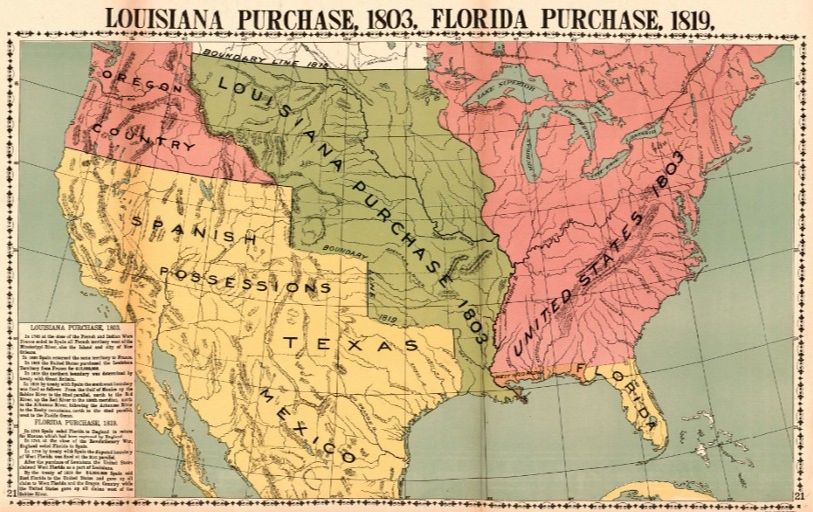The Louisiana Purchase

The United States was seeing a population boom as it entered the 1800s. America's population nearly doubled between 1790 and 1810. As the young nation grew, more land was needed for farming and agriculture.
Americans began to set their sights on westward expansion.
President Thomas Jefferson was eager to add territory, especially the crucial Mississippi River port of New Orleans. France controlled New Orleans and had rights to much of the Great Plains region.
Jefferson sent James Monroe and Robert Livingston to Paris to negotiate the purchase of New Orleans from the French Minister Talleyrand and French Emperor Napoleon Bonaparte.

Napoleon had hoped the territory would be "breadbasket" for a French Empire. However, after Toussaint Louverture led a successful revolution from French control in Haiti, Napoleon abandoned his plan.
France was facing an impending war with Great Britain and was experiencing other economic difficulties. Napoleon found himself in need of money. To Monroe and Livingston's surprise, Napoleon and Talleyrand offered to sell all of the Louisiana Territory to the United States for $15 million. Today that would be approximately $233 million.
Jefferson was not sure he was allowed to make the purchase. He held a strict interpretation of the Constitution, believing that as president he could only do what the Constitution directly stated he could.
The offer was too good to pass up. Jefferson and Secretary of State James Madison persuaded Congress to ratify and fund the Louisiana Purchase in 1803. It included 828,000 square miles of territory, doubling the size of the United States.
Settlers began moving into the territory almost immediately. President Jefferson commissioned Meriwether Lewis and William Clark to led a group to explore, map, and greet indigenous groups across the territory.
The first state to be created from the territory was Louisiana in 1812, becoming the 18th state in the Union. Eventually, 15 states were created from the Louisiana Purchase, and it is considered one of Thomas Jefferson’s most important achievements.